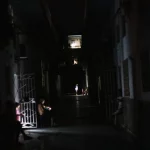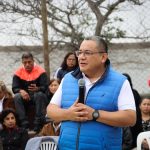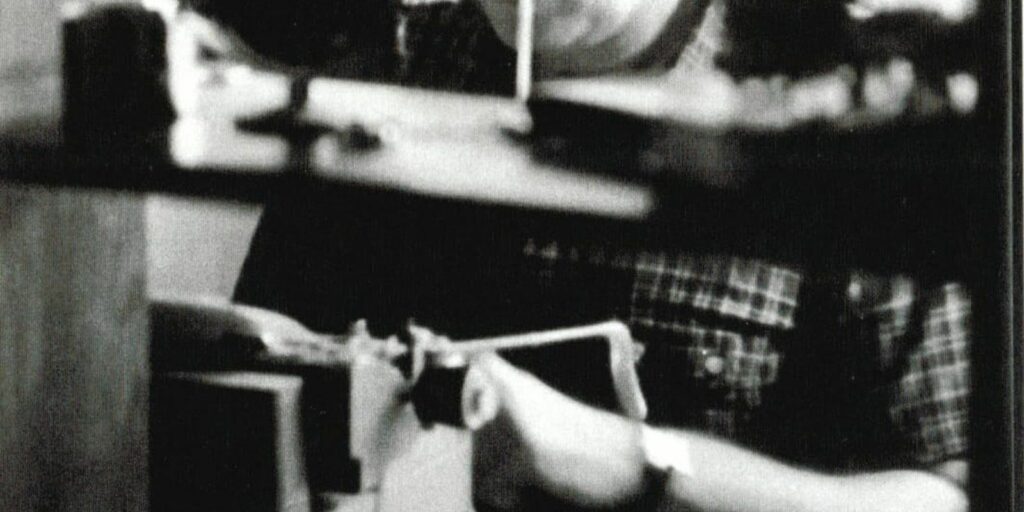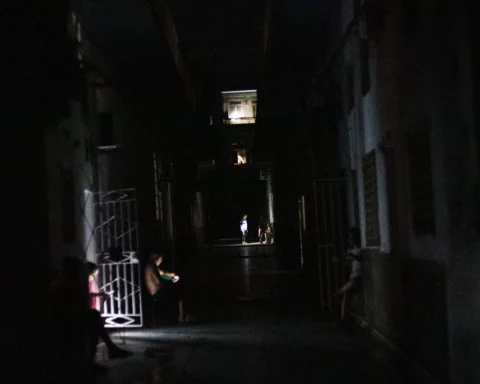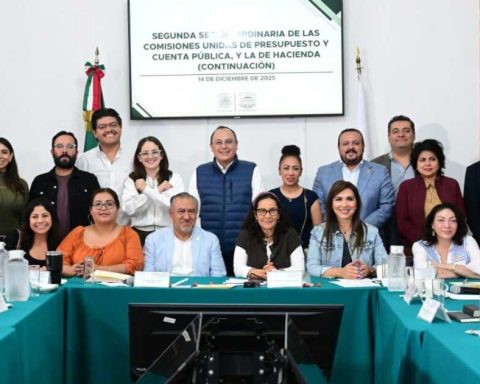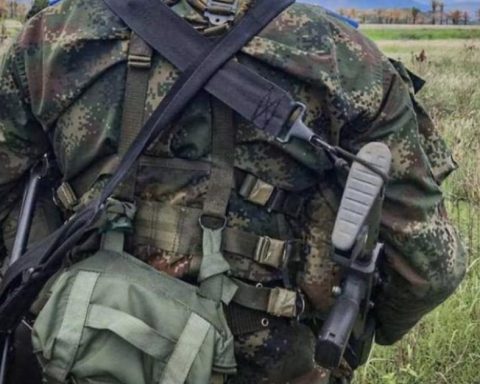January 11, 2023, 7:23 AM
January 11, 2023, 7:23 AM
There were protest demonstrations all over the country to demand the release of “political prisoners”, among them the governor of Santa Cruz, Luis Fernando Camacho. Activists, politicians and civics rejected, with different tones, the “authoritarian route” that the government of President Luis Arce could have chosen with the “systematic persecution of opponents”, they expressed.
“We are working on a town hall, but it is not because we get up early that the sun rises earlier. We are working in a coordinated manner and in unity with the rest of the country in the national council”, revealed the president of the Committee for Santa Cruz, Rómulo Calvo.
“The civic movement adheres to the citizen initiative to free justice from masista power”, added the leader before thousands of protesters who gathered in the Plaza 24 de Septiembre after a march that covered the 15 blocks that separate it from the Plaza del Estudiante, in the First Ring.
Since Camacho was apprehended, after the violent operation on December 28, the concentrations took place at the foot of the Cristo Redentor monument and targeted the Police Command. Yesterday, the route was different and there were no altercations or intervention by riot police.
For Calvo, since Arce came to the government, he has shown that “power is more important than the well-being of Bolivians”. He said that the process against the governor is illegal, intolerable and abusive. “He wants to be shown by the Government as a normal apprehension that complies with an order. But in a flagrant and shameless way it is exposed that In Bolivia there is no rule of law. They want to impose a false narrative. When there was fraud in Bolivia and to hide this serious crime, they put together a false story of a coup that did not exist, ”he said.
Earlier, President Arce disqualified the national movement. “The right wants to exalt itself and wants to teach us to defend democracy. They say now that they want to defend democracy. Here are the people who defended democracy!” said the president in La Paz, on the occasion of the 43rd anniversary of the Bartolina Sisa peasant women’s federation.
By late afternoon, The MAS reacted with violence at the Government headquarters. In the southern residential area, dozens of public officials mobilized and took over the San Miguel church. Others used firecrackers to attack a march of activists that was passing through Ballivián avenue in the Calacoto area. The Police arrived later and separated the two sides.
In the Abaroa square, others Government officials were stationed to prevent activists from of the National Council for the Defense of Democracy (Conade) can concentrate. They demanded 30 years in prison for Camacho, who is being prosecuted for terrorism, a legal figure questioned by international human rights organizations.
But the activists moved to Isabel La Católica square and then to Miraflores. The march was peaceful, but did not have police protection., whose national command is two blocks from where the activity took place. The Conade spokesman, Manuel Morales, affirmed that “the way in which the Police act is also a sign of authoritarianism” which was rejected yesterday.
“This mobilization is the beginning of a whole process that aims at the unification of the oppositions and it will cost us. We are going to refound justice,” Morales said.
Camacho’s apprehension, described as “kidnapping” by civic representatives and human rights representatives, activated a coordination of the national civic movement that yesterday celebrated the “national day of protest” that took place in the nine departmental capitals, as well as several intermediate cities, such as Riberalta and Guayaramerín in the north amazon.
But, Potosí was the department that began with “the march of potosinidad” that toured the main streets of the Villa Imperial. They claimed for Camacho, but also for Marco Pumari, the civic leader imprisoned in the Cantumarca prison after being accused of destroying public property during the November 2019 crisis that led to the resignation of Evo Morales from the Presidency.
The president of the Comcipo Mobilization Committee, Ricardo Ramos, pointed out that yesterday’s mobilizations “They are the beginning of protests to reestablish the rule of law” which, in his opinion, was broken by the lack of judicial independence that “protects corruption” of authorities linked to the ruling party, such as Governor Jhonny Mamani, who is under house arrest for irregularities in the acquisition of 41 ambulances for his region.
Cochabamba’s civics did not participate in the national mobilization, but that did not stop Conade and the city’s citizen platforms from going out to protest. The march was massive and reached the main square on September 14, then there was a sit-in in front of the Departmental Command that is on the central Heroínas avenue. Yes indeed, the mayor of the city, Manfred Reyes Villa, did not participate.
In Tarija, the demonstrators reached the Plaza de Armas. The Governor of Tarija, Oscar Montes, raised there the “urgency of a reform of the judicial system” and remarked that “the only way to stop authoritarianism will be with a judiciary that is not subject to the national government to persecute those who think differently.”
In Sucre, where there is division among civic citizens, activists from citizen platforms mobilized from El Reloj square and reached 25 de Mayo square. The march covered several streets and avenues in the center of the city. The demonstration passed through the main building of the State Attorney General’s Officewhich is investigating the case that he called a “coup d’état”, but which has to do with the crime of alleged terrorism.
In blanket (Pando) there was a column that left from the Milestone of Autonomy. Then, the marchers gathered at the feet of Christ the Redeemer, a monument of the same name in Santa Cruz, which is located between 9 de Febrero and Internacional avenues.
In Trinidad, the civic members marched through the downtown streets with national flags. The protest in that department spread to Riberalta, Santa Ana and Guayaramerín. In these towns, the citizens left in caravans with their motorcycles and expressed their rejection of the undue detentions and demanded a total reform of the judicial system “which is in the hands of the MAS.”
The Oruro Civic Committee and representatives of Conade staged a march through the main streets of the city to demand the Government for the “release of political prisoners”, especially Camacho, Pumari and former President Jeanine Áñez.
According to the constitutionalist Cartlos Börht, lhe protests that took place yesterday “are focused on the violation of rights, against the ignorance of the rule of law in the country. What should be clear is that in yesterday’s marches there was no defense of the person; It is not a protest ignoring judicial processes that may exist or, as the ruling party tries to misrepresent when it mentions that impunity is being sought.
It is clear that Luis Fernando Camacho was kidnapped because violence was used and without observing the guarantees established in the Constitution and that, in addition, prevents the legitimate right to defense”, remarked the specialist.
From the MAS, they insisted yesterday that the process against Camacho will be resolved in court.







